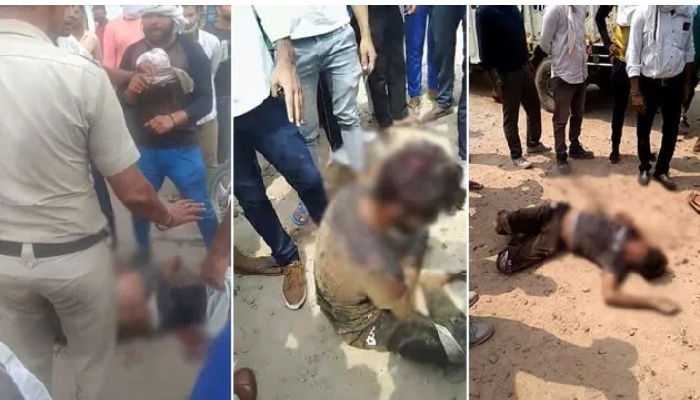
New Delhi, June 11: Rich overseas entities, investing in Indian markets through 'participatory notes' (P-notes/PNs), are estimated to have pulled out over Rs 1 lakh crore (about USD 20 billion) in less than three months on fears of getting caught in the government's taxation net and its black money trail.
As a result, the quantum of money invested through these PNs has hit its rock-bottom levels of just about 10 per cent of total FII (foreign institutional investment) holdings -- which used to be more than 50 per cent a few years ago.
The participatory notes (PNs) allow foreign HNIs (high networth individuals) and other rich investors to invest in India through already-registered FIIs, while saving on time and costs associated with direct registrations.
The flight of PN investments began late in March after the government in its union budget proposed new taxation regime of General Anti-Avoidance Rule (GAAR) and certain retrospective amendments for taxing offshore transactions.
Sources said that PN investors have already pulled out close to Rs 1 lakh crore (about USD 20 billion) from Indian equity and debt markets, while they might have decided against putting in fresh investments worth at least Rs 50,000 crore ever since the new tax policy was proposed.
While GAAR has been deferred by a year, the tax proposals for offshore transactions could apply to FIIs as well.
It is feared that the new taxes could lead to heavy tax burden for the foreign investors investing through tax-friendly jurisdictions like Mauritius. Most of the overseas entities route their investments into India through such places to take benefit of their tax-friendly regimes.
There are apprehensions that FIIs could be forced to pass on their tax liabilities to their PN clients, thus adversely impacting their overall returns on investment.
Many hedge funds and ultra-rich investors from abroad prefer PNs, which are sold by India-registered FIIs, as it allows them maximise the returns through savings on costs and rigmarole of various regulatory processes.
As per the latest data available with market regulator Sebi, the total value of PNs in Indian markets stood at about Rs 1,30,012 crore (about USD 25 billion) at the end of April 2012, down from Rs 1,83,151 crore at the end of February and Rs 1,65,832 crore as on March 31, 2012.
This figure was on a sharp uptrend this year till middle of March, but started declining sharply after tax proposals came to be known. While the mid-month figures are not shared by Sebi, the industry sources said that the total value of PNs are estimated to have reached near Rs two trillion (about USD 40 billion), before it started sliding in late March.
Sources said that the total value of PNs is estimated to have fallen further to near Rs one lakh crore level (about USD 15 billion) currently, marking a fall of nearly same amount from its late-March peak.
The share of PNs in total FII holding stood at 16.4 per cent in February, but fell to 11.4 per cent by April. It has now further fallen to near 10 per cent level, sources said, while adding that most of the FII outflow currently taking place is in the PN accounts.
The PNs have been accounting for mostly 15-20 per cent of total FII holdings in India since 2009, while it used to much higher in the range of 25-40 per cent in 2008. However, it was as high as over 50 per cent at the peak of Indian stock market bull run during a few months in 2007.
In addition to the new taxation proposals, the government's recent white paper on Black Money has added to the flight of PN investments from India, sources said.
The white paper, tabled by the Parliament on May 21, said that PNs were being used by Indian citizens to re-invest the black money in the country.
"Investment in the Indian stock market through PNs is another way in which the black money generated by Indians is re-invested in India," it said.
Participatory note is a derivative instrument issued in foreign jurisdictions, by a foreign institutional investor (FII) or its sub-accounts against underlying Indian securities.
"... through the instrument of PNs, investment can be made in the Indian securities market by those investors who do not wish to be regulated by Indian regulators due to a variety of reasons," the white paper noted.
The reasons could include the desire of investors to keep their identity anonymous, which is possible also for the reason that PNs/ODIs can be freely traded and easily transferred without disclosing the identity of the actual beneficiaries, it added.
As per the white paper, since PNs are issued from offshore financial centres (OFCs) such as the Cayman Islands, British Virgin Islands, Switzerland, and Luxembourg, it is possible to hide the identity of the ultimate beneficiaries through multiple layers.
Amid rising concerns that some of the money coming through PNs could be unaccounted wealth under the of FII investment, market regulator Sebi has already taken various measures to ensure that these instruments are not used for black money laundering. It was due to the steps taken by Sebi that the PNs' share in total FII holding had previously fallen from over 50 per cent to 15-20 per cent.





Comments
Add new comment